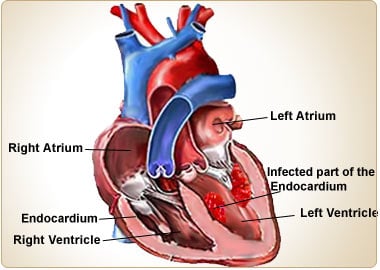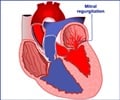- Cecil Medicine, 23rd Ed.
- The Merck Manual, 18th Ed.
About
Infectious Endocarditis (IE) is an infection of the lining of the heart chambers and heart valves. The infection is usually bacterial. It occurs when bacteria enter the bloodstream and travel to previously injured heart valves.
Infective Endocarditis has been arbitrarily categorized as acute or subacute based on the length of symptoms before presentation. A classification based on the causative organism and the valve involved is more relevant clinically.
Acute bacterial endocarditis is usually of a sudden onset with a high fever, fast heart rate, fatigue, and rapid and extensive heart valve damage. Fatigue, mild fever, a moderately fast heart rate, weight loss, sweating, and a low red blood cell count are symptoms of subacute bacterial endocarditis.

Echocardiography is used to diagnose damaged heart valves.
Intravenous administration of high doses of antibiotics is required. Damaged heart valves are repaired surgically. Patients will also have to take prophylactic antibiotics before they undergo dental or surgical procedures so as to prevent endocarditis.
Men are affected more commonly than women are. It has however been noticed that in patients younger than 35 years, more cases occur in women. IE becomes more common among older people.






